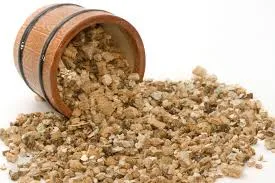Dec . 24, 2024 06:58 Back to list
Utilizing White Aggregate for Enhanced Concrete Performance and Aesthetic Appeal
The Importance of White Aggregate in Concrete Production
Concrete is one of the most widely used construction materials in the world, known for its durability, versatility, and strength. As the construction industry continues to evolve, the requirement for better performance and aesthetic appeal in concrete has led to the incorporation of various materials into its production. Among these, white aggregates stand out due to their unique properties and potential benefits. This article explores the significance of white aggregate in concrete, its advantages, and its applications.
Understanding White Aggregate
White aggregate is primarily composed of light-colored minerals, such as quartz, limestone, and marble. Unlike traditional gray aggregates, which are commonly made from naturally occurring rocks, white aggregates are sourced from specific deposits. The distinguishing feature of white aggregate is its color, which can range from off-white to pure white, depending on the mineral composition and processing methods. This characteristic allows for the production of lighter-colored concrete, which can significantly enhance the aesthetic qualities of buildings and structures.
Benefits of Using White Aggregate
1. Aesthetic Appeal One of the most significant advantages of using white aggregate in concrete is its ability to achieve a striking visual impact. White concrete can be used in various architectural applications, such as facades, pavements, and decorative elements. The light color can reflect sunlight, producing a bright and inviting appearance. Furthermore, colored pigments can easily be added to white aggregate concrete to achieve customized shades, allowing architects and designers to create unique and visually appealing structures.
2. Energy Efficiency Light-colored concrete can contribute to energy efficiency in buildings. It reflects more sunlight than darker concrete, reducing heat absorption, which is particularly beneficial in warmer climates. This reflective quality can help lower energy costs related to cooling, thereby promoting sustainability and decreasing the carbon footprint of constructions.
white aggregate for concrete

3. Enhanced Durability White aggregates are often chosen for their durability and low water absorption rates. When used in concrete, they can enhance the overall strength and longevity of the structure. High-quality white aggregates can resist weathering, freeze-thaw cycles, and chemical attacks better than traditional aggregates, ensuring the structure maintains its integrity over time.
4. Low Carbon Footprint The production process of some white aggregates can be less environmentally impactful compared to other aggregates. By selecting sustainably sourced white aggregate materials, builders can contribute to greener construction practices. The production of lighter concrete can also reduce the amount of energy required for its application, thereby promoting eco-friendly construction methods.
Applications of White Aggregate Concrete
White aggregate concrete is used in various applications across the construction industry. Some of the notable uses include
- Architectural Features Many modern buildings incorporate white aggregate concrete for walls, columns, and other architectural details to create a sleek and contemporary look. - Pavements and Walkways White concrete pavements offer excellent contrast with landscape elements, creating visually appealing outdoor spaces. The reflective quality of the concrete also aids in nighttime visibility and safety. - Artistic Installations The aesthetic versatility of white aggregate concrete makes it an excellent choice for sculptures, decorative elements, and artistic installations, allowing for intricate designs and patterns.
Conclusion
The integration of white aggregate into concrete production has significant implications for the future of construction. With its aesthetic advantages, energy efficiency, enhanced durability, and potential for sustainable practices, white aggregate concrete presents a compelling option for builders, architects, and designers. As the demand for innovative and sustainable building materials increases, the role of white aggregates in concrete will likely become even more prominent, shaping the next generation of construction methods and architectural designs. The continued exploration of these materials will undoubtedly lead to further advancements in the industry, benefiting both the environment and society at large.
-
Eco-Friendly Granule Covering Agent | Dust & Caking Control
NewsAug.06,2025
-
Fe-C Composite Pellets for BOF: High-Efficiency & Cost-Saving
NewsAug.05,2025
-
Premium Tundish Covering Agents Exporters | High Purity
NewsAug.04,2025
-
Fe-C Composite Pellets for BOF | Efficient & Economical
NewsAug.03,2025
-
Top Tundish Covering Agent Exporters | Premium Quality Solutions
NewsAug.02,2025
-
First Bauxite Exporters | AI-Optimized Supply
NewsAug.01,2025
